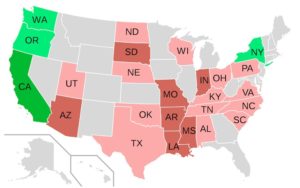May 21, 2016; NPR
From smartphone apps that can measure vital signs to social media alerts during natural disasters, these days it is increasingly common for technology to play an important role in public health. Thus, when public health experts pitched the idea in 2014 to borrow from Amazon’s playbook and use drones to deliver contraceptives to rural African villages, the idea was not farfetched.
In fact, years before Amazon started using drones for deliveries, Matternet was already using a drone network to deliver medical supplies to rural areas in places such as Bhutan, Haiti, and New Guinea. In terms of the use of drones for reproductive health, Women on Waves used a drone to deliver abortion-inducing pills from Germany to Poland in an effort to raise awareness about the restrictive abortion laws in Poland.
Fast-forward to late 2015 and the launch of the pilot program, aptly named Dr. One. In this successful pilot funded by the United Nations Population Fund and the Dutch government, birth control, condoms and medical supplies were loaded onto five-foot drones and shipped to regions of Ghana far off the beaten path. In these areas, severe weather can cause roads to close off, isolating villages from much needed medical supply chains. At the International Conference on Family Planning in Bali, South African public health specialist Kanyanta Sunkutu said, “Delivery to the rural areas used to take two days. It will now take thirty minutes.”
According to a 2012 study, although 42 percent of women in Sub-Saharan Africa would like to prevent pregnancy, only 17 percent are actively using any form of modern contraception. It is estimated that the number of women who face an unmet need for modern contraception is around 53 million. This is due in part to the rapidly growing population of women in the reproductive age range in conjunction with the growing desire for smaller families. Access to and proper use of contraception is estimated to prevent 12 million unintended pregnancies in Sub-Saharan Africa alone. In turn, this will lead to the prevention of 7 million unplanned births, around 4 million abortions (most of which are unsafe), 2 million miscarriages, and 397,000 infant deaths.
Sign up for our free newsletters
Subscribe to NPQ's newsletters to have our top stories delivered directly to your inbox.
By signing up, you agree to our privacy policy and terms of use, and to receive messages from NPQ and our partners.
The drone has proved to be a resourceful solution for battling the massive problem of access to contraception. Each drone flight costs an estimated fifteen dollars and is so cost-efficient that several governments have offered to pay for the program for its constituents.
While drones are currently the best option for delivering birth control and contraception to rural villages, this method still faces its share of obstacles. For instance, there is the distinct possibility that people will mistake medical supply drones for war drones. Dust and debris in the air, particularly during severe weather when medical supplies are most needed, can obscure drone pilots’ vision. Religious beliefs of people in these regions are also a large barrier to overcome, as many people view contraception use as immoral.
Lastly, dropping off supplies is just one piece of the puzzle. Educational materials printed in the native language of the region are also necessary to accompany the drone deliveries and ensure people use the supplies appropriately. In fact, Rosalijn Both, a researcher on Sub-Saharan contraception choice from the University of Amsterdam, feels that the outcome of the drone program hinges on health education material presented in an appropriate and accessible format.
“If contraceptives and other reproductive health commodities are simply dropped in remote areas without health education materials in the local language,” she says, “I would be surprised if the impact would be big.”—Sheela Nimishakavi













